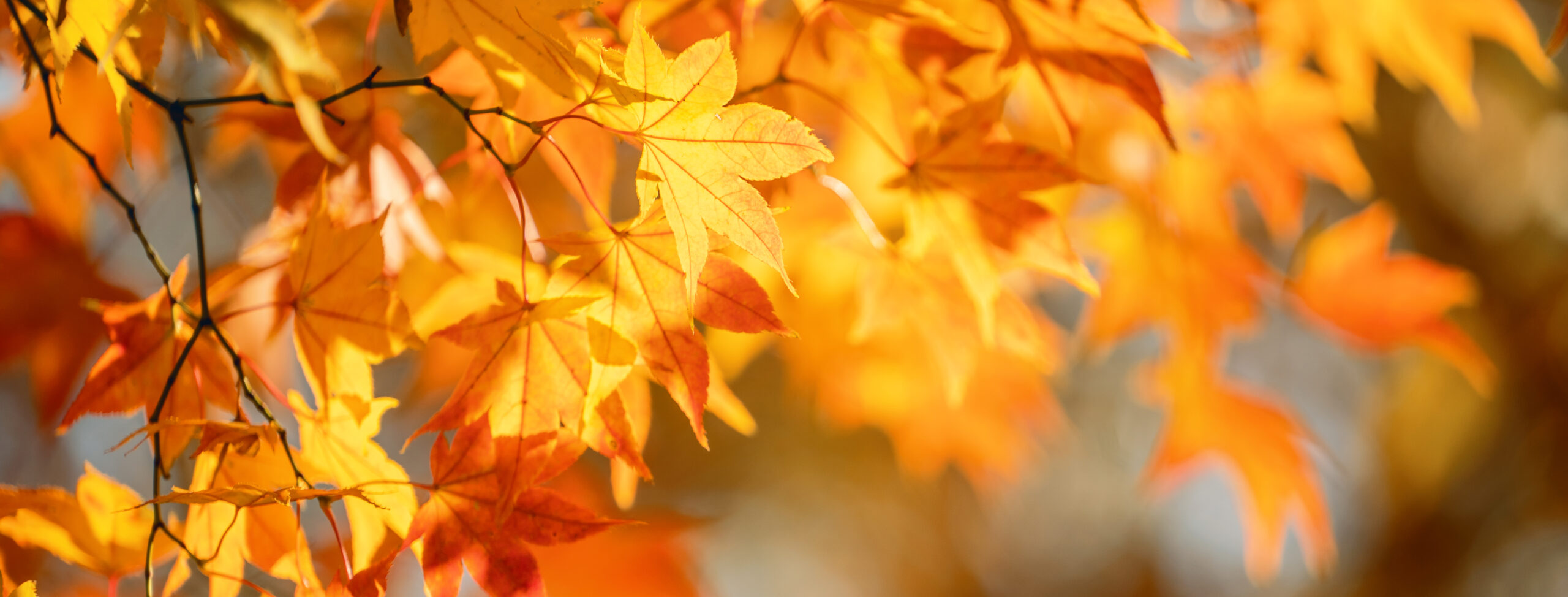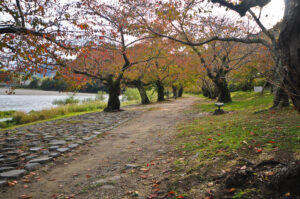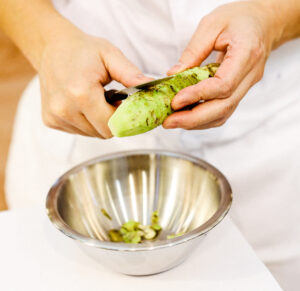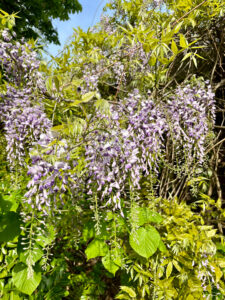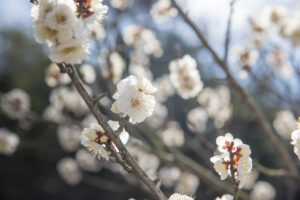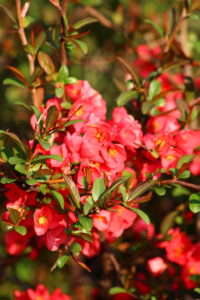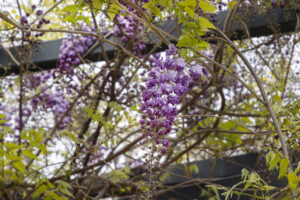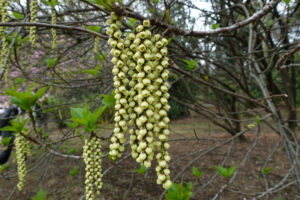The Acer Palmatum, commonly known as the Japanese maple, is a tree that captivates the hearts of gardeners and landscape designers alike. Known for its stunning foliage and graceful form, this tree has transcended its botanical roots to become a symbol of beauty and tranquility in gardens across the globe. In this exploration, we delve into the allure of the Japanese maple, its historical significance, diverse varieties, and the essential care techniques to keep these magnificent trees thriving in your landscape.
The Allure of Acer Palmatum: A Botanical Marvel
Acer Palmatum is not just another tree; it is a botanical marvel that encompasses a wide range of forms, sizes, and colors. Originally hailing from Japan, Korea, and parts of China, these trees are renowned for their delicate, lobed leaves that exhibit a breathtaking array of colors, from vibrant greens to deep reds. Their artful branching structure adds to their aesthetic appeal, making them a favorite among horticulturists and laypeople alike.
The leaves of the Japanese maple are one of its most defining features. They can range from finely cut, lace-like foliage to broader, more robust shapes, each offering its own unique charm. The seasonal color changes also contribute to their allure, with bright greens in spring, fiery reds and oranges in autumn, and even striking purples in certain varieties. This seasonal transformation creates a dynamic landscape that is ever-changing and provides year-round interest.
In addition to their visual appeal, Acer Palmatum trees carry a gentle, serene presence in any garden. Their graceful form can soften hardscapes and provide a tranquil backdrop for meditation or relaxation. For many, these trees are a symbol of peace, making them popular choices for Zen gardens and Japanese-style landscapes.
The adaptability of Acer Palmatum to various garden settings enhances its allure. Whether planted as a specimen tree, in a mixed border, or as part of a larger landscape design, Japanese maples can thrive in a variety of conditions, providing beauty wherever they are planted. Their relatively slow growth rate allows them to fit into smaller garden spaces, making them accessible to gardeners with limited space.
Furthermore, the cultural associations tied to Japanese maples amplify their appeal. In Japan, these trees are celebrated for their beauty and are often featured in art and literature. Their connections to traditional tea ceremonies and ancient shrines imbue them with a sense of spirituality and reverence.
Ultimately, the allure of Acer Palmatum lies in its ability to evoke emotion. Whether it stirs fond memories of childhood or inspires new moments of reflection, this tree is more than just a botanical specimen; it is a living piece of art that can transform any garden.
Historical Significance of Japanese Maples in Culture
The historical significance of the Japanese maple extends far beyond its aesthetic value. In Japan, these trees have been celebrated for centuries, woven into the cultural fabric of the nation. The tradition of "momiji," or maple viewing, dates back to the Heian Period (794-1185) when aristocrats would gather to appreciate the brilliant autumn colors. This practice has endured, with modern-day festivals dedicated to celebrating the beauty of maple leaves.
Japanese maples are deeply rooted in the philosophy of wabi-sabi, which embraces the beauty of imperfection and the transient nature of life. Their fleeting blooms and seasonal changes reflect the impermanence of time, making them a poignant symbol in Japanese culture. This philosophy encourages a deeper appreciation for the present moment, inviting individuals to pause and reflect on nature’s beauty.
In addition to their aesthetic and philosophical significance, Japanese maples have found a place in traditional Japanese gardens. These gardens often incorporate elements designed to evoke specific emotions, and the presence of Acer Palmatum contributes to the overall tranquility and harmony of the space. The graceful branches and delicate leaves foster an atmosphere that encourages introspection and contemplation.
The influence of Japanese maples has also extended beyond Japan’s borders. As the trees gained popularity in the West during the 19th century, they became symbols of elegance and sophistication. Garden designers and landscape architects began incorporating Japanese maples into their designs, recognizing their unique ability to enhance the beauty of various landscapes.
Artists and poets have long been inspired by the beauty of Japanese maples. From traditional Japanese paintings to contemporary photography, these trees have served as muse for countless works of art. Their delicate forms and vibrant colors create striking visual narratives that resonate with audiences around the world.
Today, the cultural significance of Japanese maples continues to evolve. They are celebrated not just for their beauty but also for their role in promoting mindfulness and a connection to nature. As urbanization increases and natural spaces diminish, the presence of these trees in gardens and public spaces serves as a reminder of the beauty and serenity that nature can provide.
Varieties of Acer Palmatum: A Colorful Spectrum to Explore
The world of Acer Palmatum is rich with diversity, boasting a colorful spectrum of varieties that cater to different tastes and landscape needs. From classic forms to more exotic cultivars, the selection is vast and offers endless possibilities for gardeners. Among the most beloved variations is ‘Bloodgood,’ known for its striking deep red leaves that provide dramatic color throughout the seasons.
Another popular cultivar, ‘Shishigashira,’ or the lion’s mane maple, features unique upright growth and tightly curled foliage, creating a visually interesting effect. This variety is particularly sought after for its architectural presence in gardens, making it a favorite among landscape designers seeking to add structure and uniqueness to their designs.
For those who prefer a softer palette, ‘Sango Kaku’ or the coral bark maple stands out with its bright green leaves and vibrant coral-red bark, which becomes particularly pronounced in winter. This variety provides year-round interest, and its striking bark adds a focal point even in the dreary winter months.
The ‘Atropurpureum’ variety showcases deep burgundy foliage that changes to vivid red in the fall, creating a stunning visual display. These bold colors make it a popular choice for gardeners looking to create a dramatic contrast against green foliage and colorful blooms in the surrounding landscape.
In addition to their diverse colors, Japanese maples also display a remarkable range of leaf shapes and sizes. ‘Kiyohime,’ for instance, is a low-growing dwarf variety with small, delicate leaves that make it ideal for smaller gardens or container planting.
Lastly, the ‘Tamukeyama’ variety exhibits cascading branches adorned with deeply lobed, purple-red leaves. It offers a stunning weeping form that is perfect for creating a focal point or adding softness to hardscapes. Each variety of Acer Palmatum brings something unique to the table, allowing gardeners to select trees that align with their personal style and the overall design of their gardens.
The Ideal Climate for Thriving Japanese Maple Trees
While the beauty of Acer Palmatum is universally recognized, these trees do have specific climate preferences that must be accommodated to ensure optimal growth. Japanese maples thrive in temperate climates, with the ideal range spanning USDA hardiness zones 5 through 8. They flourish in areas with well-defined seasons, including cold winters and warm, but not excessively hot, summers.
Acer Palmatum prefers moderate temperatures, ideally with warm days and cool nights, especially during the growing season. This temperature differential helps enhance the vibrancy of their foliage. Excessive heat can lead to leaf scorch, while extreme cold can damage young trees, making it crucial to plant them in areas where they can receive enough protection from harsh weather conditions.
In regions with hot summers, providing partial shade can help Japanese maples thrive. These trees benefit from morning sunlight while being shielded from the harsh afternoon sun, which can cause stress and leaf curling. Ideally, planting them in locations with dappled sunlight or under taller trees can help create a more favorable microclimate.
Another important aspect of climate consideration is humidity. Japanese maples generally prefer moderate humidity levels, thriving in areas where moisture is present but not excessive. In very dry climates, additional watering may be necessary to prevent stress, while in excessively humid areas, proper air circulation is essential to reduce the risk of fungal diseases.
Wind can also pose a threat to Japanese maples, particularly younger specimens with delicate branches. Planting them in sheltered locations, away from strong winds, can help ensure they maintain their shape and health. Gardeners should also be mindful of frost pockets, as late spring frosts can damage tender new growth.
Ultimately, understanding the ideal climate for Acer Palmatum is crucial for their successful cultivation. By selecting the right location and protecting them from adverse weather conditions, gardeners can enjoy the beauty of these stunning trees for many years to come.
Soil and Water Needs: Ensuring Optimal Growth Conditions
Acer Palmatum thrives best in well-draining soil that is rich in organic matter. A slightly acidic to neutral pH (between 5.5 to 7.0) is ideal for optimal nutrient absorption. Gardeners should consider amending the soil with compost or peat moss to enhance fertility and improve drainage, which is particularly important to prevent root rot—a common concern for these trees.
Good drainage is essential, as Japanese maples are sensitive to waterlogged conditions. They prefer consistently moist soil without becoming saturated, making it crucial to monitor watering practices. Heavy clay soils may require amendment with sand or other organic matter to improve drainage, ensuring that water can flow freely away from the root zone.
In terms of watering, young Japanese maples require regular moisture to establish strong root systems. During the first few years after planting, deep watering should be a routine practice, helping to develop robust roots. As the tree matures, it will become more drought-tolerant, but periodic deep watering during dry spells will continue to promote vitality and growth.
Mulching around the base of the tree can help retain soil moisture while suppressing weeds. Organic mulches, such as bark or wood chips, not only improve moisture retention but also enrich the soil as they decompose, providing further nutrients to the tree. However, gardeners should avoid piling mulch directly against the trunk, as this can lead to rot.
It is also important to monitor for signs of stress, such as wilting leaves or leaf drop, as these can indicate that the tree is not receiving adequate moisture. Conversely, yellowing leaves can signal overwatering or poor drainage, prompting gardeners to adjust their watering practices accordingly.
By ensuring that Acer Palmatum has the right soil conditions and adequate moisture, gardeners can promote healthy growth and vibrant foliage, allowing these beautiful trees to flourish in their landscapes.
Pruning Techniques for Healthy and Aesthetic Trees
Pruning plays a crucial role in maintaining the health and aesthetic appeal of Acer Palmatum. The best time to prune Japanese maples is during their dormant season, typically in late winter or early spring, just before new growth begins. This timing minimizes stress on the tree and allows for better healing of pruning cuts.
When pruning, it is essential to assess the tree’s structure and identify any dead, damaged, or crossing branches that may need to be removed. Thinning the canopy can improve air circulation, reducing the risk of fungal diseases while allowing more light to penetrate the leaves. This practice encourages healthy growth and vibrant foliage.
Japanese maples can also benefit from shaping techniques to enhance their natural form. For instance, lightly pruning to maintain a graceful silhouette can help emphasize their branching structure. Gardeners should avoid excessive pruning, which can lead to stress and disrupt the tree’s natural growth habit. Instead, focus on subtle adjustments that enhance its beauty.
For weeping varieties, such as ‘Tamukeyama,’ the pruning approach differs slightly. Maintaining the tree’s cascading form is key, so it is essential to remove any upright growth that disrupts the weeping character. Regularly assessing and adjusting these branches can help maintain the desired shape without compromising the tree’s health.
When making cuts, always use clean, sharp pruning tools to prevent injury to the tree. Cuts should be made at a slight angle to promote quicker healing and prevent water from pooling on the cut surface. Additionally, avoid leaving large stubs, as these can become entry points for pests and diseases.
Lastly, it is important to step back and evaluate the overall shape of the tree during the pruning process. The goal is to enhance its natural beauty while ensuring its health and vigor. With thoughtful pruning, Acer Palmatum can be a stunning focal point in any garden.
Seasonal Changes: Witnessing the Maple’s Vibrant Evolution
One of the most enchanting aspects of Acer Palmatum is its remarkable seasonal transformation. Each season brings a new dimension to the tree, captivating observers with its constantly evolving beauty. In spring, as the buds unfurl, the leaves emerge with soft hues of green, sometimes tinted with pink or red, creating a fresh and vibrant display that signals the awakening of nature.
As spring progresses into summer, the foliage matures into rich greens, providing a lush canopy that offers dappled shade beneath its branches. Depending on the variety, some may maintain their vibrant colors, while others may exhibit subtle shifts in hue. These deep greens serve as a stunning backdrop for colorful blooms from surrounding plants, enhancing the overall landscape.
The transition into autumn is perhaps the most celebrated season for Acer Palmatum, as the leaves transform into a breathtaking array of reds, oranges, and yellows. This mesmerizing display draws garden enthusiasts and visitors alike, eager to witness the spectacle of color. The vibrant autumn foliage creates stunning contrasts against the backdrop of evergreens and the blue sky, inviting admiration and reflection.
As winter approaches, the deciduous nature of Japanese maples comes into play. The leaves drop, revealing the intricate branching structure of the tree. This bare form has its own beauty, allowing gardeners to appreciate the graceful lines and shapes that often go unnoticed during the lush foliage of spring and summer. The starkness of winter highlights the tree’s architectural qualities, making it a focal point even in the cold months.
In regions with colder climates, the bark of Acer Palmatum takes on increased importance during winter. Certain varieties, such as ‘Sango Kaku,’ exhibit stunning coral-red bark that contrasts beautifully against the snow, providing visual interest during the bleak winter months. This unique feature enhances the tree’s year-round appeal and showcases the importance of selecting varieties that offer seasonal importance.
Witnessing the seasonal changes of Acer Palmatum is akin to experiencing an artistic transformation. Each season brings new colors, textures, and forms, creating a dynamic relationship between the tree and its environment. This evolution not only enriches the garden but also encourages mindfulness and a deeper connection to nature as one observes the passage of time.
Common Pests and Diseases Affecting Japanese Maples
While Acer Palmatum is generally a hardy tree, it can be susceptible to various pests and diseases that can affect its health and vigor. One common issue is the presence of aphids, small sap-sucking insects that can cause leaf curling and distortion. They often excrete a sticky substance known as honeydew, which can attract other pests and lead to fungal problems like sooty mold.
Another potential pest is the scale insect, which attaches itself to stems and leaves, sucking nutrients directly from the tree. Infestations can weaken the tree over time, making it essential for gardeners to regularly inspect their Japanese maples and take preventive measures. Horticultural oils or insecticidal soaps can be effective in managing these pests, especially when applied early in the season.
Fungal diseases can also pose a threat to Acer Palmatum. One notable affliction is leaf spot, characterized by dark lesions on the leaves that can lead to premature leaf drop. This condition is often exacerbated by poor air circulation and high humidity levels. Regular pruning to improve airflow and ensuring proper spacing between trees can help reduce the risk of fungal diseases.
Another fungus, known as verticillium wilt, can be particularly damaging. This disease affects the vascular system of the tree, leading to wilting and eventual death if not managed. It is crucial for gardeners to recognize the symptoms early and consult with horticultural experts for appropriate treatment options and preventative measures.
Furthermore, root rot can occur if Japanese maples are planted in poorly draining soil, leading to waterlogged conditions. Signs of root rot include yellowing leaves, stunted growth, and a general decline in vigor. To prevent this, it is essential to plant Japanese maples in well-draining soil and monitor watering practices closely.
By remaining vigilant and proactive in managing pests and diseases, gardeners can help ensure the health and vitality of their Acer Palmatum. Awareness of potential challenges allows for timely interventions, ensuring these stunning trees can continue to thrive and enchant for years to come.
Landscaping with Acer Palmatum: Design Tips and Ideas
Incorporating Acer Palmatum into landscaping designs offers opportunities for creativity and beauty. These trees work well in various garden settings, from formal landscapes to informal cottage gardens. One effective way to use Japanese maples is as a focal point. Their striking colors and elegant forms naturally draw the eye, making them perfect for placement at the end of a pathway or as a central feature in a garden bed.
Layering is another beneficial design strategy. Planting Acer Palmatum near taller, evergreen trees can create a stunning contrast, highlighting the maple’s vibrant colors and delicate foliage. This juxtaposition not only adds depth to the landscape but also provides a natural frame for the maple, allowing its beauty to shine.
In smaller gardens, dwarf varieties of Japanese maples can be particularly effective. These compact forms add character without overwhelming the space, making them ideal for container planting or as accent pieces in rock gardens. Consider grouping several dwarf varieties together to create a miniature display that celebrates the diversity of Acer Palmatum.
Japanese maples also lend themselves beautifully to themed gardens, such as Zen or Japanese-inspired landscapes. Their graceful forms and seasonal changes align perfectly with the principles of tranquility and harmony central to these designs. Incorporating elements like stepping stones, gravel, and water features can further enhance the serene atmosphere cultivated by the presence of these trees.
For borders and hedges, pruning Acer Palmatum can create soft, flowing lines that define spaces without imposing barriers. Their natural elegance complements flowering perennials, ornamental grasses, and groundcovers, providing seasonal interest and texture throughout the year.
Lastly, combining Japanese maples with other flowering shrubs and plants can create vibrant displays. The contrasting colors of maple foliage against the blossoms of azaleas or rhododendrons can produce breathtaking effects, transforming the garden into a riot of color and texture. By thoughtfully planning the placement and combinations of plants, gardeners can design landscapes that celebrate the beauty of Acer Palmatum and enhance the overall aesthetic of their outdoor spaces.
Propagation Methods: Cultivating Your Own Maples
For those interested in cultivating their own Acer Palmatum, understanding propagation techniques is essential. The most common method of propagation is through cuttings, which can be taken in late spring or early summer when the tree is actively growing. Softwood cuttings, usually taken from new growth, are the most favorable. The cuttings should be about 4 to 6 inches long, with a few leaves remaining at the top.
To prepare the cuttings, dip the cut end in rooting hormone to encourage root development and then place them in a well-draining potting mix. Keep the soil consistently moist and provide a humid environment by covering the pot with a plastic bag or a propagation dome. This strategy helps maintain moisture levels and encourages the cuttings to root over the next few weeks.
Another popular propagation method is grafting, particularly for maintaining specific cultivars of Japanese maples. Grafting typically involves taking a cutting from a desired cultivar (the scion) and attaching it to a rootstock. This method is commonly used to propagate unique varieties that may not root well from cuttings. Grafting should be performed during the dormant season to ensure the best chances of success.
Seed propagation is also possible, although it is less common due to the variability in traits among seedlings. To propagate from seeds, collect ripe seeds in the fall and stratify them by placing them in a moist medium in the refrigerator for several months. After this cold
